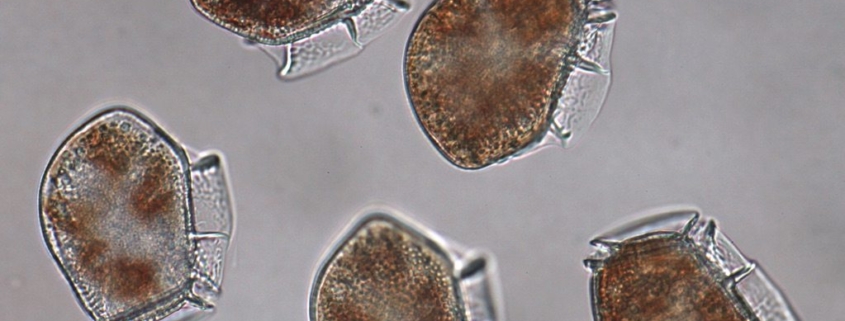COMPARATIVE STUDY OF PHYSICAL-BIOLOGICAL INTERACTIONS AND ECOPHYSIOLOGY OF TOXIGENOUS DINOFLAGELLATES OF THE GENUS DINOPHYSIS (DINOMA)
A study on the behavior and variability of the genus Dinophysis on the coasts of Galicia.
Blooms of dinoflagellates of the genus Dinophysis produce lipophilic toxins (diarrheal and pectenotoxins) that are accumulated by filter-feeding bivalves and lead to prolonged extraction bans. These closures (DSP events) occur every time toxin levels exceed the limits established to safeguard public health and constitute the main THREAT to bivalve production on the European Atlantic coast, particularly for the mussel sector of Galicia.
A comparative study on the physical-biological interactions and autoecology of D. acuminata and D. acuta is proposed in order to: (1) quantify and parameterize the anomalies in the pattern of winter upwelling and summer stratification that promote the early initiation of spring proliferations of D. acuminata and summer proliferations of D. acuta, respectively; 2) investigate their nitrogen sources and quantify the influence of light, temperature and turbulence on their growth-toxin production balance; 3) explore, with molecular tools, the existence of different prey ciliates than M. rubrum as well as differences in pico- and nanoplanktonic biodiversity associated with the beginning and development of the two species of Dinophysis. The results obtained will contribute to explaining the interannual variability and the replacement of D. acuminata by D. acuta in certain years. Likewise, they will help explain the paradox of their coexistence in certain years, but occupying different layers of the water column. The ultimate objective is to obtain useful information for improving predictive models for an operational oceanography approach.



